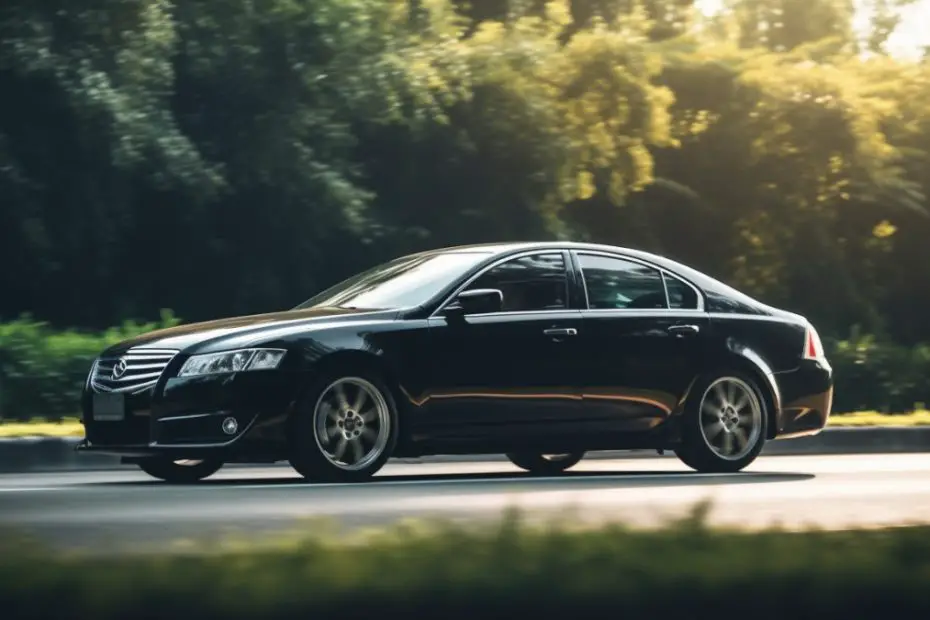If you’ve noticed that the coolant has turned murky brownish in color, it’s a warning sign of potential trouble brewing in your vehicle’s engine.
A brown coolant can be caused by-
- Corroding substances
- Contaminated oil and water
- A breakdown of the coolant itself.
Unfortunately, this can lead to engine damage, reduced performance, and overheating problems. It’s essential to act fast and diagnose the problem to prevent further damage to your engine.
In this article, we’ll provide you with insight into identifying and addressing your question, “Why is my coolant brown?” Along with this, we will also provide some additional tips.
Importance Of Proper Coolant In Vehicle
The cooling system of your car is an essential component. This component directly affects the performance of your vehicle. In order to maximize performance and ensure the longevity of your car’s engine, it is essential to maintain the proper coolant balance.
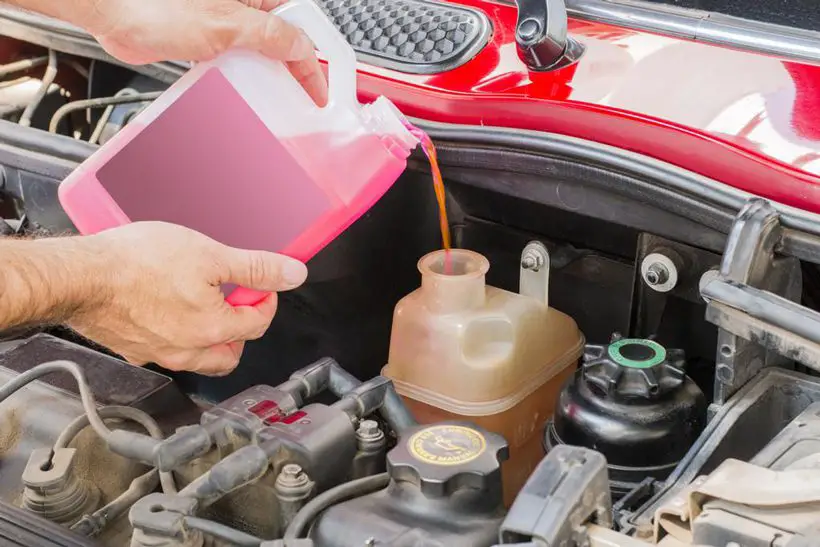
Here are some explanations for why the ideal coolant balance is crucial:
- Maintain the Heat Transfer Agent: Coolant prevents deposits that reduce the heat transfer agent’s (air, oil, refrigerant, and stem) ability to draw heat from the engine. Otherwise, this will cause the engine to overheat and suffer damage or failure.
- Provides Lubrication to Reduce Friction: Coolant serves as a lubricant for engine parts, such as the water pump and bearings. It helps to reduce friction and prevent wear.
- Eliminates Chips and Small Abrasive Particles: Coolant flushes away debris and small particles that can accumulate in the engine over time. It reduces the risk of engine damage and failure.
- Protects Against Corrosion: Coolant contains corrosion inhibitors (ex: morpholine and hydrazine) that protect the engine against rust and other forms of corrosion. Regular coolant changes help to ensure that these inhibitors remain effective, prolonging the life of the engine.
- Lubrication: Coolant lubricates the water pump, which helps to circulate the coolant throughout the engine. This lubrication prevents the pump from overheating.
- Freeze protection: In cold weather, water can freeze and expand, causing serious damage to the engine. Coolant contains antifreeze, which prevents the water from freezing and damaging the engine.
Common Causes of Brown Coolant
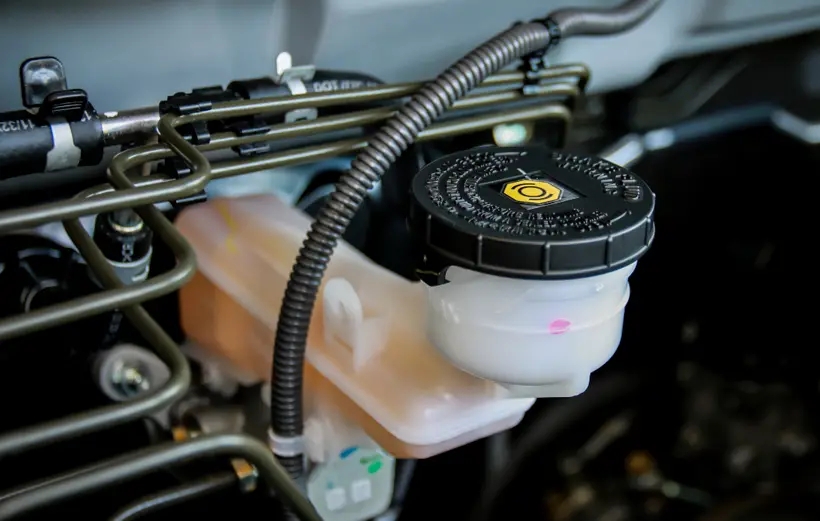
Numerous problems in a car’s cooling system can result in the brown coolant. Some of the most typical causes are listed below:
Water contamination
Water can mix with the coolant in the cooling system and turn it brown. A cracked cylinder head or a leak in the water pump are two scenarios where this might occur.
Oil Contamination
Oil contamination is associated with a leaking head gasket, cracked engine block, or damaged cylinder head. These make the oil contaminated and ultimately shut the system down.
Dirt and debris
Other than oil and water, dirt, debris, and other particles can accumulate in the cooling system. This can cause the coolant to become dirty and brown.
Rust
All common cooling system components, including the thermostat housing, water pump, cylinder head, and radiator, are susceptible to rust development. Brownish coolant is the result of these rusts combining with the coolant.
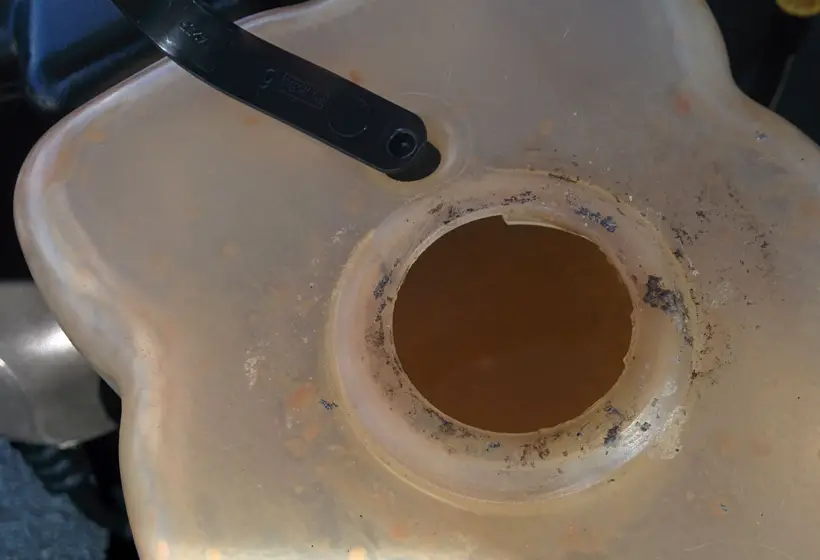
Sediment Buildup
Some engine parts are primarily responsible for sediment buildup. The cause is when rust, hard water, and engine debris get into the coolant. After mixing it with the coolant, the color changes to brown.
Diagnosing Brown Coolant
Typically, brown coolant indicates a problem with the cooling system of the car. The following are some possible solutions to the problems:
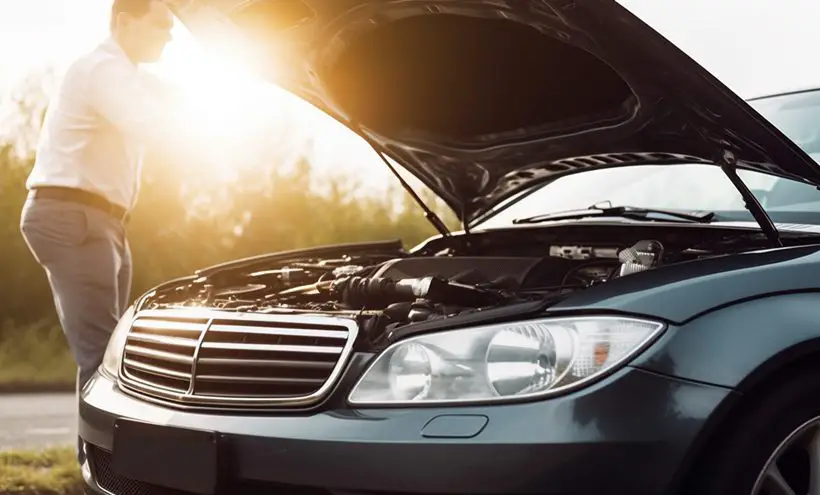
Inspecting the coolant system
Before visually inspecting the coolant, it is important to allow the engine to cool down first.
- Radiator cap: Check the radiator cap first. The reason is it is responsible for releasing excess pressure that builds up in the coolant. Make sure the radiator cap is not corroded or filled with grime, as this can cause the coolant to turn brown.
- Water pump: Also visually inspect the water pump for any signs of leakage. The water pump can fail for various reasons, such as belt damage, which can prevent the pulley from moving correctly.
- Coolant hoses: The coolant system can also fail if the hoses become damaged. Take a quick look at the hoses running from the radiator to the engine. Overheating can cause cracks or holes in the hoses, which can ultimately cause the coolant to turn brownish or change color.
Examining the oil for contamination
Examine the oil substances and texture; if it doesn’t seem normal, it must be contaminated. A leaking head gasket, cracked engine block, or damaged cylinder head can cause this.
Checking for sediment buildup
Locate the coolant reservoir, which is typically a plastic tank near the radiator. If you see any sediment or debris, it will block the flow of coolant through the system.
Examine coolant
Check the coolant substances by opening the coolant reservoir and taking some samples.
Here is how you take samples:
- Step 1: After cooling down the engine, locate the coolant reservoir (near the radiator). Here you can see the coolant levels that are marked as maximum and minimum.
- Step 2: Now clean the reservoir cap. To avoid contamination of the sample, clean the reservoir cap with a clean cloth or paper towel.
- Step 3: Collect the sample. Remove the reservoir cap and collect the sample with a glass jar.
- Step 4: Reinstall the reservoir cap. Immediately after collecting the sample, be sure to tightly fasten the cap on the coolant reservoir.
[Note: you can also use a coolant testing kit to check its purity.]
Solutions for Addressing Brown Coolant

Brown coolant in a vehicle’s cooling system can be fixed in a number of ways; here are a few of them:
1. Flushing the coolant system:
To get rid of any contaminants, debris, or rust that might be the source of the brown color. The first thing you should do is flush the coolant system.
Here is how you flush the coolant system
- Step 1: Gather all the essential tools. Funnel, drain pan, coolant flushing solution, new coolant
- Step 2: Drain the existing coolant. Let the old coolant out by opening the radiator drain plug.
- Step 3: Run the engine after adding the coolant flush solution
- Step 4: Finally, drain the flush solution and add your new coolant.
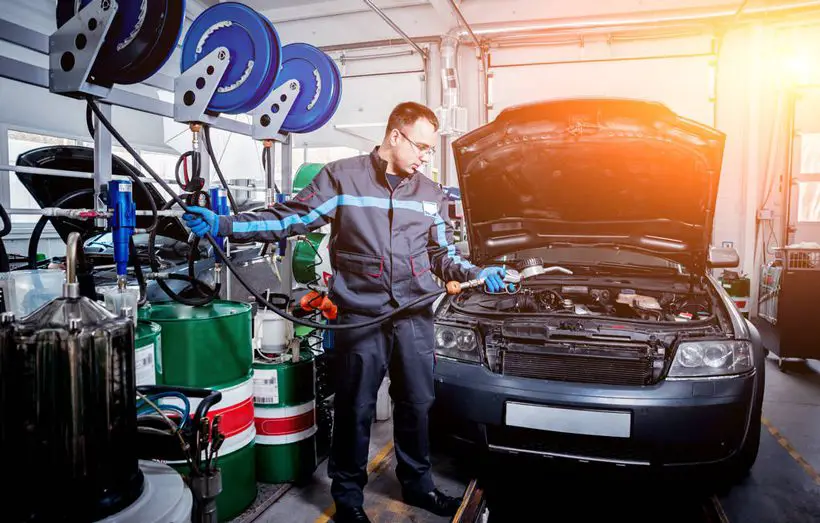
2. Replacement of the damaged parts
If the brown coolant is caused by a damaged component, such as a cracked engine block, leaking head gasket, radiator cap, or water pump, it is crucial to change the damaged component quickly.
In cases where the damage is not severe, it is essential to fix it correctly to prevent further problems.
3. Using a coolant additive
These additives don’t help to remove anything (any particles or contamination) from the coolant. Here are a few popular additives:
- Borate
- Nitrite
- phosphate
- Silicate
- Sodium benzoate
The right additives must be chosen so that they work well with your coolant. These additives can be included in the coolant mixture to help solve the brown coolant problem.
4. Use a rust inhibitor
If rust is the root of your brown coolant problem, you should think about adding a rust inhibitor to your new coolant. This may assist in avoiding additional rust and corrosion in the cooling system. These are some common rust inhibitors:
- Chromates
- Nitrates
- Molybdates
- Tungstate
Preventive Maintenance Of Your Vehicle’s Cooling System
It’s crucial to maintain your car’s cooling system properly to ensure dependable operation and avoid expensive repairs. Here are some actions you can take to maintain the cooling system in your car:

- Regular Maintenance: Regular maintenance is an essential task for cooling system balance maintenance. Regular maintenance includes the following:
- Checking coolant levels and condition
- Flushing coolant system (routinely, after 30,000 to 50,000 miles)
- Inspect the hoses and belts
- Checking and cleaning radiator cap
- Testing thermostat
- Inspecting the fan and fan clutch
- Coolant System Checks: Visually inspecting your coolant system on a regular basis would be a good habit. Check the coolant level in the radiator or overflow tank particularly. Verify that the coolant is at the proper level and keep an eye out for any leaks.
- Monitoring Temperature Gauge: Pay attention to the temperature gauge on your car. A cooling system issue may be indicated by a gauge reading that is higher than usual.
[Note: Before attempting to identify the issue, stop your car and let it cool down]
If you’re concerned about brown coolant and want to learn how to prevent your car from overheating, we recommend checking out our articles on how to keep your car from overheating and car overheating signs. Our article on how to keep your car from overheating provides useful tips and preventive measures to maintain optimal engine temperature and prevent overheating. Additionally, our article on car overheating signs helps you identify common warning signs of an overheating engine. By understanding these signs, you can take proactive measures to address any potential issues and keep your vehicle running smoothly.Conclusion
With the information provided, individuals who have been wondering, “Why is my coolant brown?” should now be able to understand everything.
Brown coolant is a sign of contamination brought on by rust, corrosion, or a coolant breakdown. Leaving this contamination unchecked can result in overheating, engine damage, and decreased performance.
It’s crucial to flush the system, swap out any broken parts, and re-fill the system with fresh coolant to address brown coolant. Regular coolant system inspections and upkeep can help prevent brown coolant. Also, it ensures proper engine temperature and performance.
